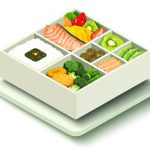Remember those days when finding a face mask was like searching for gold? Those days are over. Now, you’ve got so many choices it can be overwhelming! This guide cuts through the confusion, helping you find the perfect mask for your needs. We’ll compare different types – like N95s, KN95s, cloth masks, and disposables – showing you the pros and cons of each. We’ll cover everything from how well they filter to how to wear them properly, how to spot fakes, eco-friendly options, and even a peek into the future of mask technology. For information on properly disposing of used PPE, see this helpful guide on disposal guidelines. Get ready to become a face mask expert!
Face Cover Mask Selection: Your 2025 Buyer’s Guide
The world of face masks has definitely changed since the pandemic. While we don’t need them everywhere all the time anymore, there’s still a real need for good quality face coverings, especially for certain situations. Concerns about new variants, seasonal allergies, and even air pollution are keeping masks relevant. Plus, people are paying more attention to things like how eco-friendly a mask is and how well it actually works. This guide will help you find the perfect mask for your needs, but what factors contribute to a mask’s overall effectiveness?
Figuring Out Your Mask Needs: It’s Personal! | Understanding Personal Protective Equipment (PPE)
What level of protection are you after? Are you a healthcare worker who needs the best possible protection? Or are you just looking for something to wear on the subway or in a crowded store? Consider whether you’re immunocompromised or regularly interact with vulnerable individuals. The amount of risk you face will totally change which mask is best for you. Also, think about comfort. If you need to wear a mask for hours, breathability and fit become crucial. Consider the environment in which you’ll be wearing the mask to determine the appropriate level of filtration and safety.
Types of Face Masks: A Quick Comparison | Assessing Filtration Efficiency
Let’s break down the main types of face coverings:
| Face Mask Type | Filtration Efficiency (PM2.5) | Breathability | Reusability | Price Range | Best For | Limitations |
|---|---|---|---|---|---|---|
| N95 Respirator | 95% or Higher | Moderate | Single-Use | $$$ | Healthcare pros, high-risk situations | Can be uncomfortable for extended wear; not washable. |
| KN95 Respirator | 95% or Higher (Claimed) | Moderate | Single-Use | $$ | High-risk situations, public transit | Quality can vary widely; look for reputable manufacturers. |
| Disposable Surgical Mask | ~60-80% | Good | Single-Use | $ | General use, lower-risk environments | Loose fit; limited protection against airborne particles. |
| Reusable Cloth Face Mask | Varies Significantly | Varies | Multiple Uses | $ | Everyday use, eco-conscious people | Filtration depends on fabric and construction; requires regular washing. |
| Elastomeric Respirator | 99% with P100 filters | Good | Reusable (filters disposable) | $$$$ | Industrial use, high-exposure situations | High initial cost; can appear intimidating. |
Important Note: The filtering ability of reusable cloth masks can change a lot depending on the material and how well it’s made. Look for multiple layers of tightly woven fabric (like cotton), and a good fit. Are there specific certifications to look for when evaluating the effectiveness of cloth masks? While there isn’t a single certification, look for masks that have been tested by independent labs and meet standards like ASTM F3502.
Choosing the Right Mask: A Simple Step-by-Step Plan | Ensuring Proper Fit and Seal
- Assess Your Risk: If you’re in a high-risk situation (like working in a hospital or visiting someone who’s immunocompromised), an N95 or elastomeric respirator is probably your best bet. For everyday use in crowded spaces, a KN95 or a surgical mask might be enough. If you are just running errands outdoors, a cloth mask may be sufficient.
- Comfort and Fit Are Key: A mask that doesn’t fit properly just won’t work as well, no matter how good the material is. Make sure it feels comfortable and seals well against your face. Look for adjustable straps and nose clips. A good fit means the mask should sit snugly against your face without gaps. Perform a “seal check” by exhaling sharply – you shouldn’t feel air leaking around the edges.
- Check for Certifications: Look for certifications like NIOSH (for N95s) to make sure the mask really does what it claims. This helps avoid fakes. For KN95s, check for GB2626-2019 certification on the mask itself. (Note: many KN95s sold in the US are not certified).
- Think Green: Reusable masks are much better for the environment than disposable ones. Just make sure to wash them regularly! When disposing of disposable masks, consider cutting the ear loops to prevent them from entangling wildlife.
- Budget Matters: High-protection masks tend to be more expensive. Weigh the level of protection you need against your budget. Reusable options can save money in the long run, but factor in the cost of replacement filters (if applicable) and cleaning supplies.
Sustainability: Making Eco-Friendly Choices | Evaluating Environmental Impact
Disposable masks create tons of waste. Reusable masks are a much better option for the planet. Look for masks made from sustainable materials, like organic cotton, hemp, or recycled fabrics. Consider masks with replaceable filters to extend the lifespan of the mask body. And remember, keeping your reusable masks clean is key to both their effectiveness and their longevity. Which sustainable materials offer both excellent filtration and environmental benefits? Hemp and bamboo offer good breathability and are naturally antimicrobial. Organic cotton is a versatile choice. Innovative materials like Tencel (made from wood pulp) are also gaining popularity for their softness and eco-friendliness.
Regulations, Certifications – What to Look For | Spotting Authentic Masks
Certifications are crucial for ensuring you’re getting a genuine, effective mask. There are unfortunately a lot of counterfeit masks out there, so always buy from trusted sources. Check the labeling carefully for details on filtering capacity and any certifications it might have. What are the key indicators of a fraudulent mask certification? Be suspicious of certifications that can’t be verified online or that come from unknown organizations. Look for misspellings or inconsistencies in the labeling. A legitimate certification body will have a website where you can verify the certification number.
The Future of Face Masks: What’s Next? | Emerging Mask Technologies
We’re likely to see some exciting developments in face mask technology. This includes new filter materials (like graphene-based filters), improved comfort and designs, and even smart masks with built-in sensors (imagine a mask that tells you the air quality!). Some researchers are exploring self-sterilizing masks using UV light or antimicrobial coatings. The trend is clearly towards masks that are both highly effective and environmentally friendly. Will future mask technology prioritize improved breathability and user comfort? Absolutely. Innovations in nanofiber technology and advanced materials are focused on creating masks that offer high filtration with minimal breathing resistance. Expect to see more personalized mask designs that cater to individual facial features and comfort preferences.
Remember, choosing the right face mask is a personal decision. It depends on your individual needs, risk level, and preferences. Hopefully, this guide has given you the tools to make an informed choice!
How to choose the best reusable N95 (or Equivalent) face mask for everyday use
Key Takeaways:
- The market offers various respirator types (N95, KN95, KF94, FFP2, etc.), each with different protection levels. Understanding the nuances is key.
- Proper fit is crucial for any mask’s effectiveness. A poorly fitted mask offers minimal protection.
- Counterfeit masks are a significant concern; buy only from reputable sellers and verify certifications whenever possible. As a result of supply chain issues, these are genuine concerns.
- Reusable N95 alternatives offer cost savings and reduced environmental impact but require proper cleaning and maintenance. Their lifespan is limited, and filter replacement is often necessary.
- NIOSH certification signifies a mask meets US safety standards. Other countries have their own certifications (e.g., EN 149 for Europe).
Navigating the Mask Maze: Types and Their Traits | Understanding Filtration Standards
So, you’re looking for a reusable N95-equivalent mask for daily wear. Smart move! But the sheer variety can be overwhelming. Let’s break it down. Disposable N95s remain the gold standard for maximum protection in high-risk settings, but they’re not always practical or sustainable for everyday use. Reusable options provide a cost-effective and environmentally friendly alternative, but they demand more care and attention.
KN95 and KF94 masks offer decent protection for lower-risk scenarios, like crowded public spaces or public transportation. They often boast better comfort than N95s, but their filtration capabilities generally aren’t as robust. FFP2 masks are the European equivalent of N95s/KN95s. Remember, proper fit, regardless of mask type, is paramount.
- The Best Bento Box Price For Your Perfect Packed Lunch - December 15, 2025
- Bento Box Shopping Tips for Smart and Stylish Lunch Prep - December 14, 2025
- Bento Box Trays Streamline Restaurant Meal Presentation and Transport - December 13, 2025










